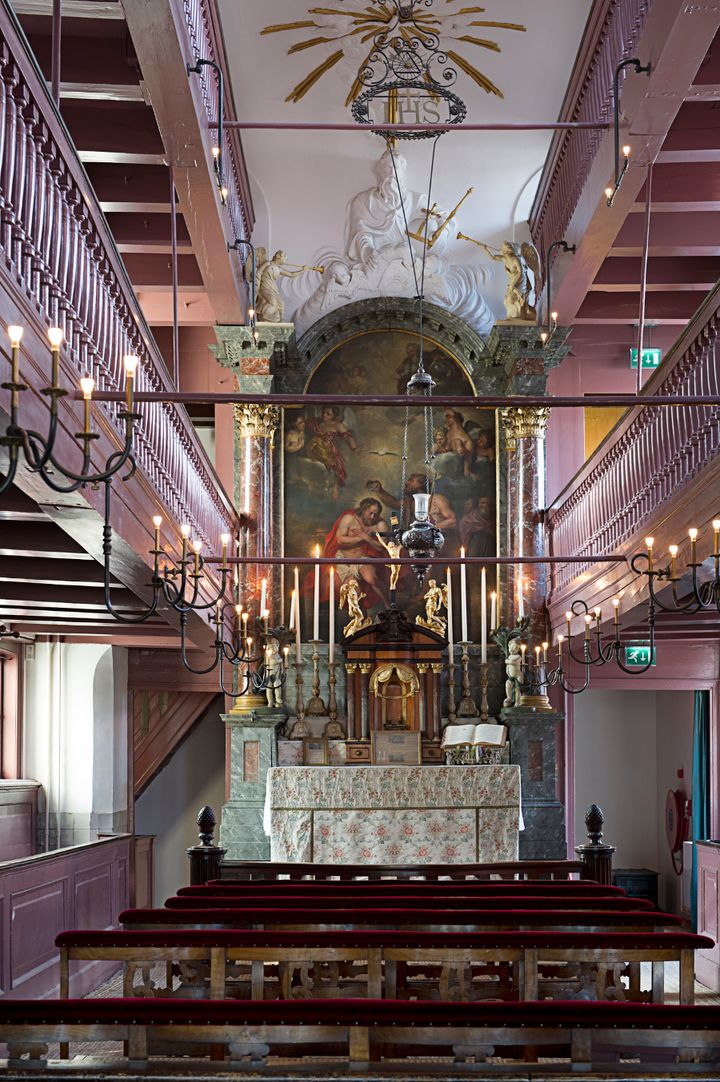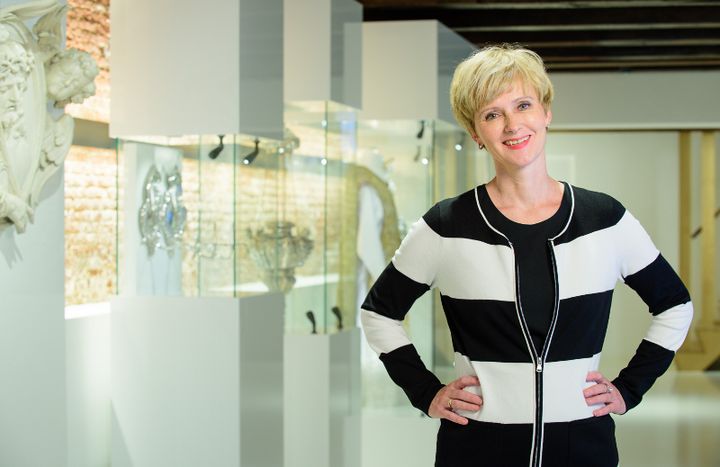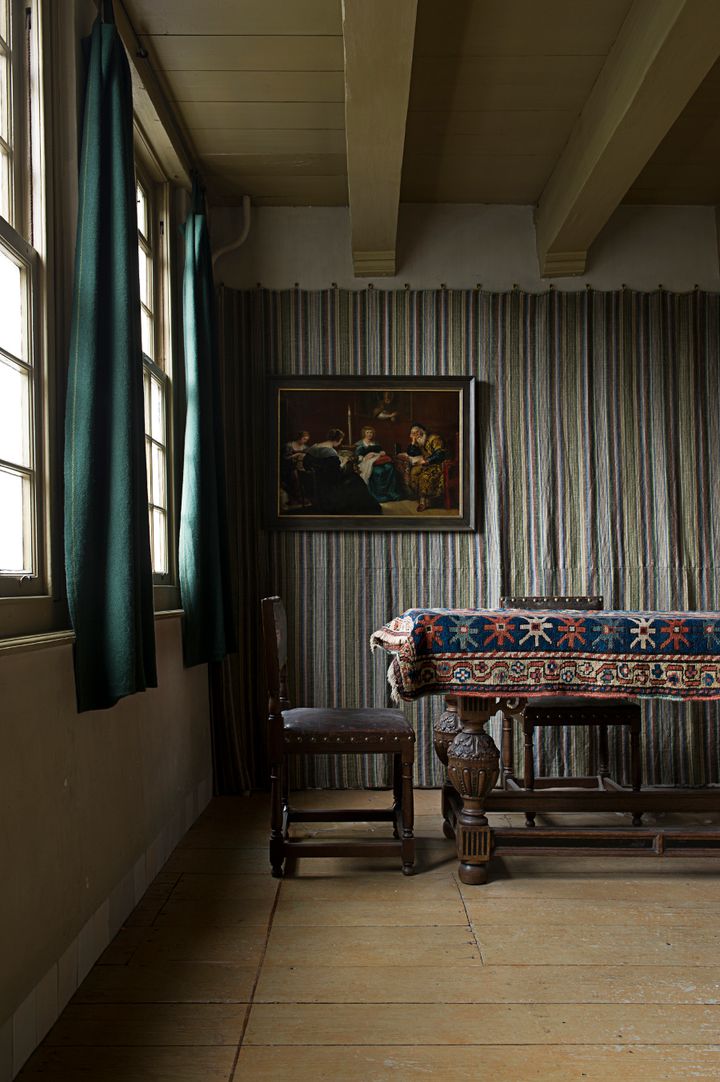In 2016, TripAdvisor enlisted two of Amsterdam’s museums on the Top 25 List of Europe’s finest museums. One year earlier, the European Museum of the Year Award 2015 was presented to the city’s State Museum. However, it’s Amsterdam’s second oldest museum that embodies one of the fundamental Dutch values – tolerance. Our Lord in the Attic museum is an exquisite 17th-century canal house, harbouring an even more splendid former house church. Reopened in 2015 after a 6-year refurbishment period at the cost of €11 million, the museum’s tolerance awareness programme has been acknowledged by UNESCO. In this interview, the museum’s director, Birgit Büchner, comments on the creation of awareness amongst pupils, the tension field between visitor numbers versus the conservation of cultural heritage and the promotion of tolerance in an era in which populism is experiencing a global rise.

The imposing house church in the attic of the 17th-century canal home.
HP: How would you describe the drastic renovation the museum has been through?
“It was a very large project that -after thorough examination- comprised three elements: securing our cultural heritage, creating accessibility for the benefit of the public and establishing new frameworks as a reflection of Dutch society.
Besides a learning process, I would personally define this refurbishment period as a voyage of discovery. Not only did we learn a great deal about, for instance, colour and design research, but we also made delightful disclosures such as the discovery of ancient relics under the altar stone in the church. In an empty old cesspool, we encountered an array of ceramic cooking pots and plates, cuspidors, tea cups and glasses and bottles.
All in all, the museum currently encompasses the 17th-century canal home with the unique house church that is located in the attic of the latter and a purchased adjacent building that now serves as the main entrance. We opted to restore the church in ‘old pink’, and as such adopting the colour that was effective back in 1862. The contrast between the old and new buildings, represents a ‘yin-yang factor’ through which we highlight the interconnectedness between then and now”.

Birgit Büchner, director of the Our Lord in the Attic museum: “This museum will always be characterised by a ‘wow-effect’ no matter the political direction of the Netherlands”.
HP: After the reopening 2 years ago, the attention of the museum was geared on different aspects revolving around tolerance, while looking for convergence with pre-vocational schools. How did this come into being?
“When establishing new frameworks for the museum, we carried out comprehensive exploratory rounds around different schools in the Netherlands. By doing so, we came to the conclusion that from all educational tracks in the Netherlands, the needs displayed by pre-vocational schools aligned best with our vision. Subsequently, Voices of Tolerance was called into existence. This is a range of interactive workshops as part of tolerance, in which dialogue forms the principle guide. By means of this, not only do we make an attempt to create social awareness amongst pupils, but we also aim to increase their self-awareness.
Queen Máxima of the Netherlands performed the opening of our museum. On this day she just sat down and listened to the dialogues that took place between the pupils and the role-models that are linked to this programme. The same applies to the city’s mayor who had a conversation with some pupils in terms of what he could do to improve the city. Voices of Tolerance has formally been recognised and certified by UNESCO for its groundbreaking nature”.
HP: In a proposed policy, the Dutch government has indicated to be willing to invest an additional €28,6 million in the cultural sector during 2017. As the director of this museum, does your heart skip a beat when hearing such favourable news?
“It should be clear that our museum is a private foundation. Consequently, we are restrictedly responsible for a sound management and to furthermore create our own sources of revenue. We receive support from the municipality of Amsterdam, but this is not an obviousness – the municipality maintains a register of museums in the city that are A-rated, which means that their cultural significance is regarded of such great importance that they are always equipped with sufficient financial funds. As our museum does not fall into this category, we are to compete every 4 years with several other cultural institutions in Amsterdam in order to possibly receive a financial contribution. As this does not provide security, we are always inquisitive in finding alternative revenue streams within and outside the museum. In a nutshell, it’s like running a company – the profit motive cannot be downplayed”.

This exquisite room in the canal home served as a living room during the day and as a bedroom at night.
HP: Still, the museum has experienced a duplication in its number of visitors. Is this a way to safeguard its existence? And having said this, how do you ensure that these buildings will still be in proper condition for future generations?
“While it’s true that our attendance figures have doubled in the last decade, our principle objective is not to triple this amount as we stand for quality and, as I said earlier, the security of our cultural heritage.
Therefore, we have a rather strict policy when it comes to joint groups of visitors and considering the size of the museum we do not exclude the possibility to eventually introduce ‘time slots’. Unlike in the past, our new main entrance was strategically built from the perspective that visitors would only reach the old buildings once they are dust and humid-free. In addition to this, boot swabs are mandatory in the old parts and we have also shielded the respective staircases and the walking spaces by means of protective carpeting”.
HP: Considering the resurgence of populism in many parts of the world, will this museum still be standing for tolerance 5 years from now?
“The tolerance aspect is not a marketing tool introduced by us. It was subconsciously embedded in the mission and vision of this museum since its official opening in 1888. While we firmly believe that we could keep playing a major role in promoting social cohesion, this museum will always be characterised by a ‘wow-effect’ no matter the political direction of the Netherlands.”
AUTHOR’S NOTE:
House churches were the 17th-century way of dealing with religious diversity in the Netherlands. The Protestant city government of Amsterdam tolerated Catholics, Jews, Muslims and Lutherans, amongst many, as long as they didn’t practise their faith in public. As a result, places of worship were established in private houses. The house church in the Our Lord in the Attic museum, is the only one in the Netherlands that has been preserved in its original state.
By taking the 17th century as the entry point, the museum creates incentives for all visitors to contemplate how cultural differences are being dealt with nowadays.
